So in my previous write-up, while highlighting the benefits of alternative and custom layouts, I declared without much evidence that QWERTY is not that bad at all, and also that it is in the top 2% of all the possible layouts. Well, like so many times in life: it depends.
I did my original research many years ago - the exact value was in fact 1.82% -, but I forgot to mention that this is only valid in a special case: using my personal corpus and ruleset. It makes sense since back in the day I did this to support the design process of my own custom keymaps.
Anyway, it was high time to redo my original experiment, dive in this topic a bit deeper, and reveal the logic and method behind my calculations. Spoiler alert: I was wrong! Or was I? ;)
QWERTY
Everyone knows QWERTY I guess. Christopher Sholes, Remington 2 typewriter, preventing jamming of type bars, path dependence, whatever. I'm not going to cover it here, check this previous write-up of mine if you are interested in that part. Last time we've seen how QWERTY performs against some popular alternative layouts so today let's focus on how it performs in general, against all the possible keymaps.
There is a plethora of alternative layouts out there nowadays, it may be hard to imagine that back in the late 1800s there were promising alternatives available too. Sholes himself came up with a revised layout, then there's the "ideal" keymap of Hammond typewriters (my personal favorite from that time), but this article is not really about layout history either.
Photo: an unprovoked shot of my Hammond with the "ideal" layout
Historical alternatives failed to get traction, the hegemony of QWERTY has been undisputed for almost one and a half century, so it only makes sense to once again investigate the performance of QWERTY compared to all the possible layouts - this time from a different perspective, to get some kind of benchmark, or rather range of benchmarks, and also to recognize some useful facts early in our layout optimization journey.
There are many important lessons to learn, so let's try to identify the exact place and rank of QWERTY in the endless list of possible layouts.
Number of possible layouts
First things first: there is a huge, incomprehensible number of possible layouts out there. There's no way anyone can check all of them to find the best one or place QWERTY among them.
The 30-key layout examples of my previous article mean there are 30 factorial (30!) permutations which is 2.65*10^32. We can stick to this number for English, while keeping in mind that many languages use much more letters: alphas of various extended Latin character sets.
Photo: Yep, this is QWERTY too (well, QWERTZ but anyway...)
E.g. strange folks of Europe, me included, using the Latin alphabet on steroids, stubbornly insist on their funny national accented characters easily resulting in 35-letter alphabets. Add just the most frequently used three symbols which you'd like to access on the base layer (comma, period, hyphen in my case), and we are at 38! or 5.23*10^44 possible layouts considering only alphas. Yep, we've just added 12 zeros to the already impressive previous value.
At this point I just feel like typing out this beautiful number here would be a lot of fun, but it may break the page layout. (I may get back to this at the end of the article.)
What is QWERTY at all?
In fact, QWERTY is not a single layout, it's a family of layouts. QWERTY, beside the standard Latin letters, is pretty different in various countries of the world. For one, German folks and many nations of Europe use QWERTZ as default - Y and Z swapped - which is pretty much the same. However, there's a more important factor: instead of the relatively rarely used symbols of the US QWERTY, their places may be filled up with much more frequent national characters (see the photo above), which makes these QWERTY arrangements fundamentally different when evaluating them in context of various languages.
The effect is only partially caused by the particular characters. The main reason is simply the number of characters to consider, i.e. the physical layout.
The method
So how did I came up with the 2% claim? In short: I simply generated a few millions of random layouts as a sample, evaluated them each - which made it possible to rank them and look for the share of layouts better (and worse) than QWERTY.
Those who read my previous post will know full well that any such simulation and comparison only works if we use the same corpus and ruleset, which means everything depends on your typing habits (including language(s) used) and preferences (rules with relative weights). What I wasn't prepared for was the real impact of these factors.
Corpus: I continued the Harry Potter examples so initially I let the model type out the first Harry Potter book with a balanced ruleset.
Image: QWERTY heatmap based on Harry Potter language statistics.
I set up the rules so the model would give one penalty point for any annoying character combination (row change and hurdle, same-finger keypress, etc.) and one bonus point for any "good" keypress (home position, hand alternation, roll). In addition, instead of a penalty table based on gut feel, I used the distance your fingers have to travel, assuming that more travel means less comfortable keypresses.
This is a very basic ruleset but serves our cause pretty well: practically counting occurrences, which is as objective as it gets, and avoiding all the subjective weights people often declare without any scientific consideration.
Graph: Percentage of layouts beating QWERTY in 20K batches of random layouts.
In the end we investigate only a tiny fraction of the layouts so you may ask an important question: Is our sample large enough? It's pretty obvious if you look at the graph above, at least for our purpose. Plotting the results (batches of 20,000 layouts) reveals that as we progress with the simulation and evaluate more and more layouts we are closing in on an average pretty soon.
Although the number of better layouts in the 20K batches fluctuate between 34 and 56, in the example above the value is stabilizing around 45 as we pass 100K layouts.
The effect of the ruleset
To sum up my experience: The ruleset is a huge part of the results. The problem is: the ruleset is full of subjective weights, usually.
Using my initial rules (which turns out wasn't really that balanced as I intended either), I was wondering why every second random layout beats QWERTY. Oops. That's about 50%, not 2%. Why?! Well, because actually relying on equal penalty points for pretty much every factor except finger movement means the distance your fingers have to travel defines the outcome, overwriting everything else. And because QWERTY is not that good at putting frequent letters on the home row, many random layouts end up performing better in this sense, accidentally. (At least in the case of small, 3x10 core layouts.)
Image: Output example showing 333 out of 1000 random layouts beat QWERTY in this run.
Fixing the ruleset by raising the equal penalty points to the order of magnitude of the distances (19mm grid...) means "only" about 33% of the random layouts beat QWERTY.
As we start to play around with weights and preferences, e.g. rewarding rolls or hand alternation - as you wish -, and penalizing hurdles and samefinger keypresses more, we arrive at below 10% (QWERTY is better than 90% of all the possible layouts this way).
The effect of the corpus (and physical layout)
The 2% value is still pretty far so how did I came up with it once upon a time?
Well, looking back at my original research conducted in 2018, I realized, quite logically, that I used my personal corpus - which is mainly non-English. As we've already covered, the bunch of national characters on the flanks and even in the number row, sitting in less favorable positions, make QWERTY-variations pretty good when it comes to a deathmatch against random layouts.
In addition, while the English alphabet fits in a minimal 3x5 split layout (30 keys), alphas of the extended Latin character sets require more physical keys thus larger layout.
And with more options for placement, random layouts easily end up with important letters on the position of symbols.
That said: corpus and physical layout heavily affect performance. With some further tweaking I got an even lower number: 0.2% - when QWERTY beats 99.8% of the random layouts .
Result
So how good/bad is QWERTY in reality? It's in the top 2% for me, however, as we've seen, it may be in the top 0.2 or 53% for you. It beats either 99.8% of all the layouts or less than half of them, which is night and day.
I hope you understand it by now: take the same layout, but if we alter the corpus, the result will change. Just like if we bother with the ruleset and apply different penalty points, weights, etc.
Everything depends on your personal circumstances, so feel free to experiment and apply these principles to your typing habits (corpus) and preferences (ruleset).
What we've just learnt
- Don't believe anyone's numbers, especially if it comes to layout design.
- Whether QWERTY is good or bad depends entirely on your typing habits: physical layout, language/corpus, preferences.
- In the best case (0.2%), QWERTY was outperformed by only 2 random layouts out of 1000. (This suggests relying on random layouts in optimization models is absolutely inefficient.)
- In a worse scenario (50%+), every second random layout may outperform QWERTY. Relying on random layouts while looking for better alternatives may seem to be worth considering in this case.
- Well, not really. Random layouts may be better than QWERTY but usually not much better. It's next to impossible to find really good ones randomly in a pool of 2.65*10^32 or 5.23*10^44 alternatives.
- On the physical layout: both 60% QWERTY users and minimalistic split keymap wizards may be right. QWERTY on 60% is relatively better than QWERTY on 30-40%.
- Bonus: these principles are valid not just for QWERTY but any other layout.
All in all, now that we've made it clear why it makes sense to be sceptic and bother with custom layouts, in the upcoming articles of this series we will look into methods to find and design much better custom keymaps.
Yep, one more thing. As I promised earlier:
520,000,000,000,000,000,000,000,000,000,000,000,000,000,000 - this is the number of all the possible layouts for my 38-key layout (ignoring thumb keys).












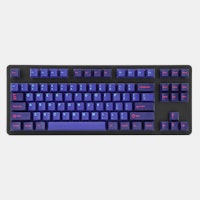
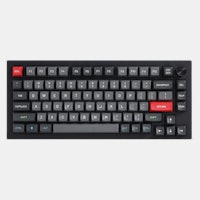
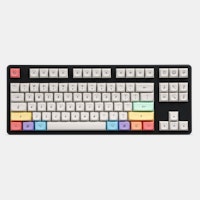
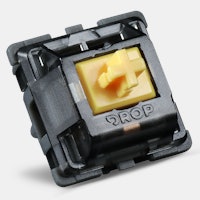

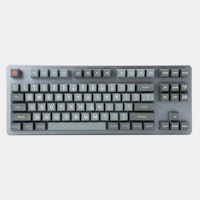
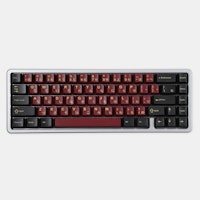
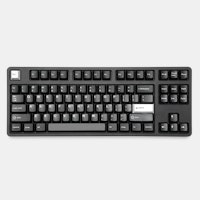
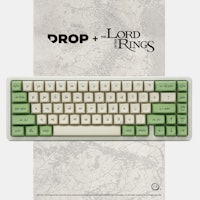







- Don't believe anyone's numbers, especially if it comes to layout design.
- Whether QWERTY is good or bad depends entirely on your typing habits: physical layout, language/corpus, preferences.
- In the best case (0.2%), QWERTY was outperformed by only 2 random layouts out of 1000. (This suggests relying on random layouts in optimization models is absolutely inefficient.)
- In a worse scenario (50%+), every second random layout may outperform QWERTY. Relying on random layouts while looking for better alternatives may seem to be worth considering in this case.
- Well, not really. Random layouts may be better than QWERTY but usually not much better. It's next to impossible to find really good ones randomly in a pool of 2.65*10^32 or 5.23*10^44 alternatives.
- On the physical layout: both 60% QWERTY users and minimalistic split keymap wizards may be right. QWERTY on 60% is relatively better than QWERTY on 30-40%.
- Bonus: these principles are valid not just for QWERTY but any other layout.
All in all, now that we've made it clear why it makes sense to be sceptic and bother with custom layouts, in the upcoming articles of this series we will look into methods to find and design much better custom keymaps.Yep, one more thing. As I promised earlier: 520,000,000,000,000,000,000,000,000,000,000,000,000,000,000 - this is the number of all the possible layouts for my 38-key layout (ignoring thumb keys).